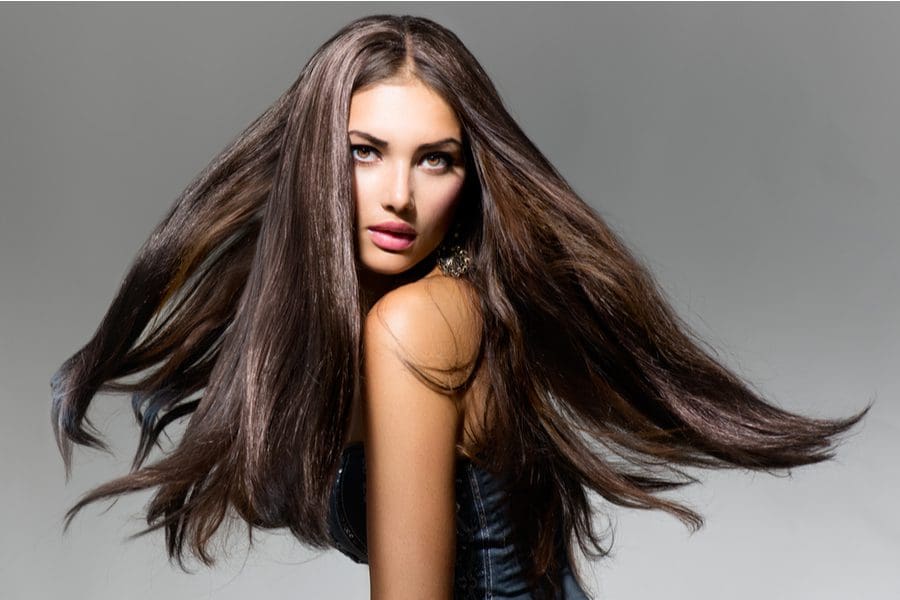Maybe you have considered hair extensions, but don’t know where to start! When done right, hair extensions can be an amazing confidence booster by adding 6-22 inches of extra length and extra volume! Hair extensions have come such a long way in recent years – so no need to fear. We’re breaking down some common questions so you can find the extensions to fulfill your hair dreams and needs.
What different types of hair extensions are there?
- Microbead Extensions
This type of extension uses small microbeads that attach individual hair extensions to the root near your natural hair follicles. The hair stylist will section a very small section of hair, attach the microbead, put the hair extension into the bead, and clamp the bead flat. No heat is needed with this type of extension, which helps protect your hair. Your stylist will choose the bead color and size to match your hair color and thickness of hair. Something to be aware of for these types of extensions – if one (or more) is yanked by accident or caught and pulled, they may fall right out. (Which is better than pulling your own hair out and damaging it).
- Tape-In Extensions
Tape-in extensions are probably the most common extensions and with good reason! For starters, they take less time to apply, which cuts down on overall cost. But the biggest perk? They’re also easy to remove, so there’s less commitment. Tape-in extensions tend to be recommended for women with thinner hair since they lay flush for a more natural look. Plus, there’s a lower risk of damaging your hair because the glue is more gentle than other glues. They can be removed at home with extension glue remover.
- Fusion Or Glue-In Extensions
These extensions have evolved significantly over time. They use a keratin substance to melt, harden, and fuse the extension to strands of your hair. This process takes much longer than others to apply and remove, making it very difficult to do yourself. But the best thing about glue-in extensions? Once they are in, they last longer than the prior two extensions if they are taken care of properly. Be sure to follow salon guidelines for daily care.
- Flat-Tip Extensions
Flat-tip extensions are a mix of the microbead method and the tape in extension. Although this extension uses microbeads to attach the hair, the extension piece is slightly larger and includes more extension hair. When cared for properly, these extensions last several months and can be reused.
- Clip-In Extensions
If you’re looking for temporary, easy to manage hair extensions, clip-ins are your best choice! You can style them in minutes and take them out in seconds. It’s an instant solution for volume or length – just be sure to pick a color and texture similar to your natural hair. Then, simply clip the extensions to your hair to quickly achieve the look you crave.
Should you get natural or synthetic extensions?
When shopping around for extensions, consider the results. Unfortunately, it isn’t easy to achieve that coveted full, natural look with synthetic extensions. Instead, opt for natural, real human hair extensions from a trusted source. While they are typically more expensive, the result is worth the money!
How much do hair extensions typically cost?
The cost of extensions can vary greatly – it depends on the type of extensions you choose and the length. Since the type of extensions determines the application process, extensions that require more time in the salon will carry a higher price tag. Alternatively, temporary extensions tend to be more affordable for those who aren’t ready to commit.
When you decide to get hair extensions, it’s essential to start by seeing a professional stylist trained in extensions. Remember, when applied properly, there is no reason why hair extensions should look bad or damage your hair!






